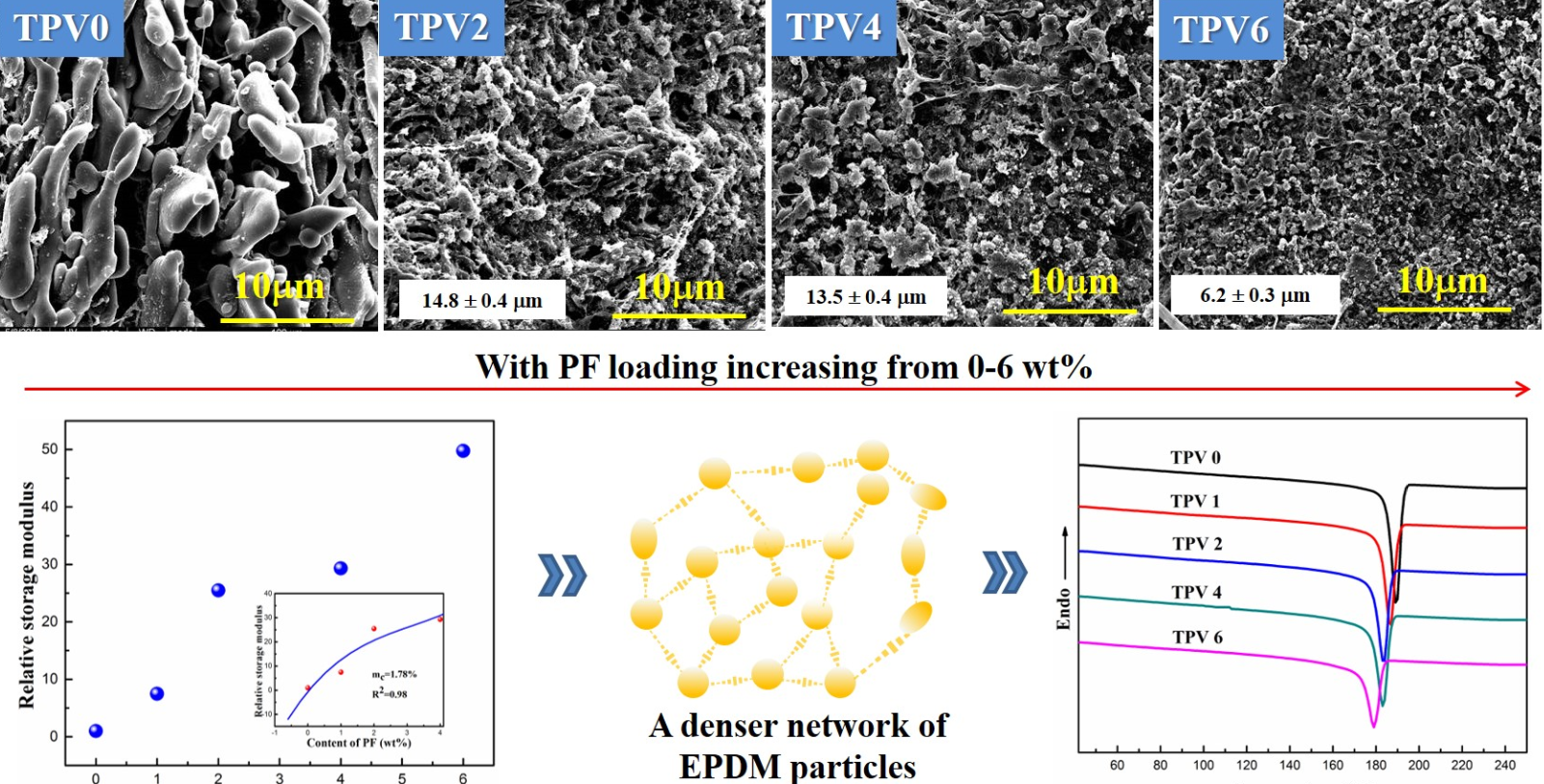As a special class of “green” elastomers, thermoplastic vulcanizates (TPVs) have been widely used in industries due to the combination of the excellent resilience of conventional elastomers and the easy recyclability of thermoplastics. Here, the morphology evolution of TPVs based on polyamide 6/ethylene-propylene-diene rubber (PA6/EPDM) blends was investigated by varying the content of the curing agent, phenolic resin (PF). With the incorporation of 6 wt% PF, the gel content of the EPDM phase reaches a high value of 49.6wt% and a typical sea-island structure is formed with EPDM domain in a micro-nano size. The dynamic rheology behaviors of TPVs showed that with the curing degree of EPDM phase increasing, a denser network of EPDM particles is formed in PA6 matrix. Also, a lower crystal degree and crystal peak temperature are observed, indicating that the presence of a growth restriction of PA6 crystal plate induced by a thinner plastic layer between the adjacent EPDM particles. However, the crystal form of PA6 is not changed with the increasing curing degree of the EPDM phase. This study provides an effective strategy to realize a new kind of TPVs, which can be easily introduced into industrial applications.

